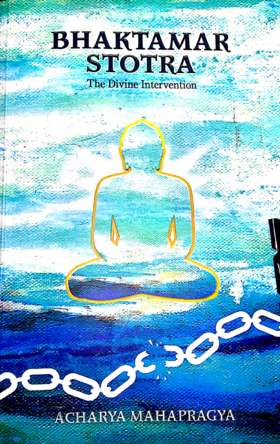The tradition of composing odes and eulogy has been followed since ancient time. "Viraththui" in canonical text Sutrakritanga, "Chaturvinshatistav" of "Aavashydka sutra" and "Sihaviravali" of canonical text "Nandi" are the well-known devotional hymns. A number of devotional and eulogical composition have also been composed and penned by various Jain acharyas in the post aagamic age. Among those works Bhaktamar is widely acknowledged and holds a prominent position. It is recited by thousands of followers with deep devotion and faith to overcome their obstacles and breakdowns.
It is a medium sized composition, composed in the praise of Lord Rishabh. This work of devotion is equally acceptable in both traditions, Shvetamber and Digamber, but their beliefs differ in the context of the number of verses in it. The Digamber believes that there are forty-eight verses in the Bhaktamar, while Shvetamber believes there are forty-four verses. In fact, there are also some who believe that there are four independent verses but this is not known to many. In this context Dr. Nemichand Shastri asserts- "according to Shvetamber there are forty-four Shloks, the reason behind it is they have accepted verses depicting only four pratiharya (divine endowment) and have omitted the four verses depicting showering of flowers, halo, trumpets and divine speech. Manuscripts of Digamber tradition include additional four new verses depicting the four pratiharya. Thus fifty-two verses also came into existence. In fact there are forty-eight verses in this stotra.
Dr. Nemichand Shastri has also narrated two other assumptions about the time period of Acharya Maantung. Some historians believe Acharya Maantung had existed in the time of King Harshvardhan, whereas according to Dr. A. B. Keith, Acharya Maantung existed in the time period of a well-known poet named 'Baan'. And another renowned historian Pandit Premi has assumed him to be contemporary to 'King Harsh'. The composition period of Bhaktamar is dated to seventh century. According to one conception, earlier Acharya Maantung became a Shvetamber monk and later converted to Digamber monk and another conception is that earlier he was initiated in Digamber and was later converted to Shvetamber monk.
Sermon on Bhaktamar started during Delhi chaturmas, in 1994 and continued till Ladnun chaturmas in 1996. Few sermons were delivered in the presence of Acharya Shri Tulsi, while others were given independently.
Acharya Mahapragya
Gangashahar (Rajasthan)
15 August 1997
 Acharya Mahaprajna
Acharya Mahaprajna
